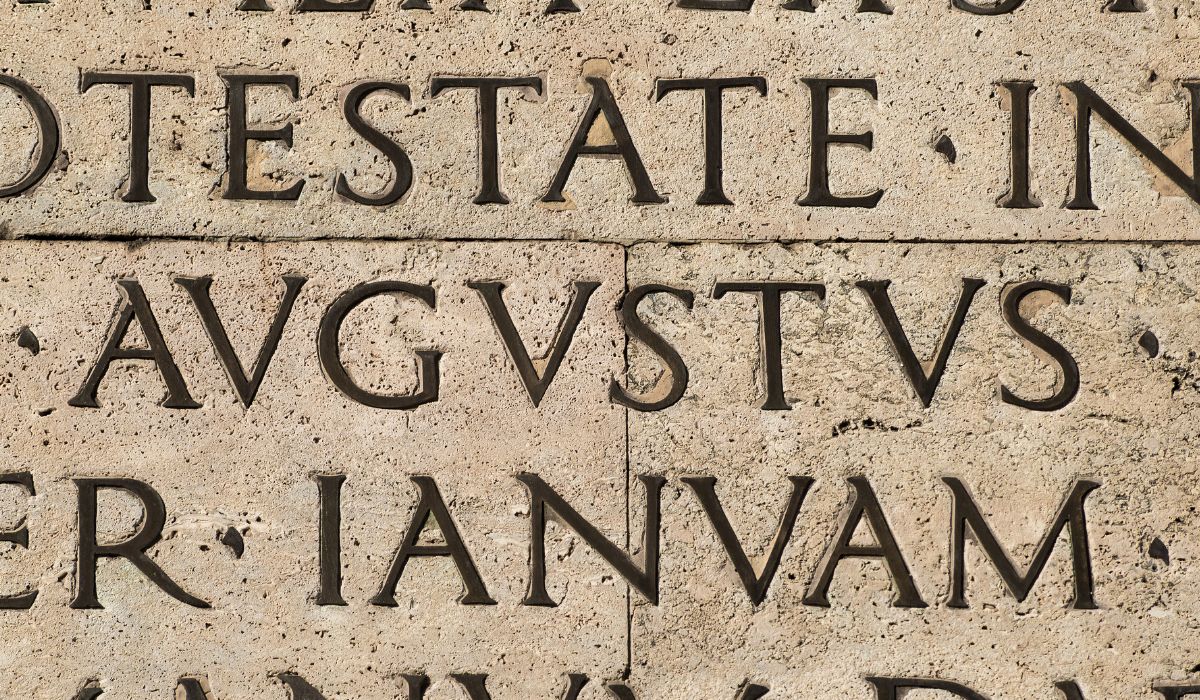How Adjectives Work in Latin
Table of Contents
What Are Adjectives?
Adjectives are a part of speech that describe nouns and other parts of speech that can take the place of nouns (pronouns or substantives). Adjectives name some sort of attribute of the noun whether it is a quality, quantity or extent, or specific distinction from something else. Many languages, like English, rely on word order to show readers and speakers what word an adjective is describing, but since Latin is an inflected language, word order matters little when it comes to modifying words. Instead, readers must rely on the grammar and endings.
Just like Latin nouns, which have case (nominative, genitive, dative, accusative, ablative, vocative), number (singular or plural), and gender (masculine, feminine, neuter), a Latin adjective must match the noun it describes in these three qualities.
Latin adjectives fall into two categories:
1st & 2nd Declension Adjectives.
1st and 2nd declension adjectives are what most students begin learning when it comes to adjectives in Latin. 1st and 2nd declension adjectives, as the name implies, grammatically belong to the 1st and 2nd declensions of Latin. That means that when we decline them (change the ending so that it is in the correct grammatical case), these adjectives will take 1st and 2nd declension endings. In the dictionary, these words are usually given 3 forms, such as longus, -a, -um or longus, longa, longum.
This word – the word for “long” in Latin, is a 1st and 2nd declension adjective. These adjectives take 1st declension endings when the grammatical gender is feminine, 2nd declension endings when the gender is masculine, and 2nd declension neuter endings when the gender is neuter.
Take the sentence below for example.
Titus magnus puer erat.
Titus was a large boy.
In this example, the word magnus (large) is describing the word puer (boy). Both are nominative, masculine, and singular, so magnus must be describing the boy. Note that the endings do not have to be the same. While many students begin learning Latin with 1st or 2nd declension words, many fall into the trap of believing that modifiers of nouns must look alike. This is not the case. While this can get you by in Latin I and maybe Latin II, it will hinder you when it comes to reading more complex Latin texts. Focus on matching the case, number, and gender.
Puella in parvо̄ agrо̄ habitat.
The girl lives on a small farm.
In the sentence above, parvo (small) is modifying the word agrо̄ (farm) because they are both ablative, singular, and masculine. Take a look at the chart below for the 1st and 2nd declension adjective endings.
| 1st (Fem.) | 2nd (Masc.) | 2nd (Neuter) | |
| Nom | a | us | um |
| Gen | ae | ī | ī |
| Dat | ae | о̄ | о̄ |
| Acc | am | um | um |
| Abl | ā | о̄ | о̄ |
| Nom Pl. | ae | ī | a |
| Gen Pl. | arum | о̄rum | о̄rum |
| Dat Pl. | īs | īs | īs |
| Acc Pl. | ās | о̄s | a |
| Abl Pl. | īs | īs | īs |
There are 9 irregular adjectives that decline a little differently:
unus, –a, –um – one
totus, –a, –um – all, whole
nullus, –a, –um – no, none
solus, –a, –um – alone, only
ullus, –a, –um – any
alter, altera, alterum – the other (of two things)
neuter, neutra, neutrum – neither (of two things)
uter, utra, utrum – which (of two things)
alius, alia, aliud – the other [genitive singular sometimes alterius]
*These irregular adjectives follow the same pattern as the pronouns ipse, ipsa, ipsum; ille, illa, illud; iste, ista, istud
In these adjectives,
- genitive singular form is “‘”-ius”
- the dative singular form is “-i” for all genders.
For example:
unus, -a, -um
| | 1st (Fem.) | 2nd (Masc.) | 2nd (Neuter) |
| Nom | una | unus | unum |
| Gen | unius | unius | unius |
| Dat | uni | uni | uni |
| Acc | unam | unum | unum |
| Abl | unā | unо̄ | unо̄ |
| | | | |
| Nom Pl. | unae | unī | una |
| Gen Pl. | unarum | ununо̄rum | unо̄rum |
| Dat Pl. | unīs | unīs | unīs |
| Acc Pl. | unās | unо̄s | una |
| Abl Pl. | unīs | unīs | unīs |
3rd Declension Adjectives
3rd declension adjectives have the same endings as 3rd declension nouns, but they follow the rules for i-stem 3rd declension words. That means the adjectives have
- “-i” fo the ablative singular
- “-ium” for th genitive plural
- “-ia” for the nominative, vocative, and accusative neuter plural
In these adjectives, the masculine and feminine forms are generally the same while the neuter form is different. You can tell the difference by looking at the forms of the dictionary definition.
Three termination 3rd declension adjectives
acer, acris, acre – sharp, keen
These adjectives have different forms for the masculine, feminine, and neuter genders in the nominative singular case (and accusative singular for neuter) but will take the same 3rd declension endings and look the same otherwise.
Two termination 3rd declension adjectives
omnis, omnis, omne – all
These adjectives have the same form for the masculine and feminine genders in the nominative singular and a slightly different form for the neuter.
One termination 3rd declension adjectives
ferox, ferocis – savage, wild
These adjectives have one form for all three genders. Note that the neuter endings are slightly different in the 3rd declension, so there is still some way to differentiate the neuter from the other two in some cases, but otherwise they will look alike. In the dictionary definition, the forms given do not indicate the genders but the nominative singular and genitive singular forms like with nouns.
As mentioned in the previous section, adjectives do not need to match in form in order to describe a noun. They only need to match in case, number, and gender. All below are examples in the nominative singular.
ferox vir – the ferocious man
acris puella – the (mentally) sharp girl
sapiens senex – the wise old man
| 3rd (Masc./Fem.) | 3rd (Neuter) | |
| Nom | — | — |
| Gen | is | is |
| Dat | ī | ī |
| Acc | em | — |
| Abl | ī | ī |
| Nom Pl. | ēs | ia |
| Gen Pl. | ium | ium |
| Dat Pl. | ībus | ībus |
| Acc. Pl. | ēs | a |
| Abl Pl. | ībus | ībus |
Strive Resources | TpT | Made By Teachers | Classful | Etsy





